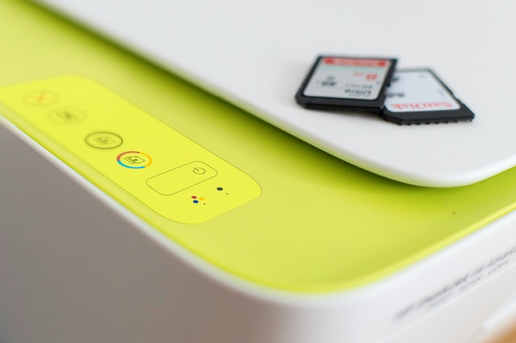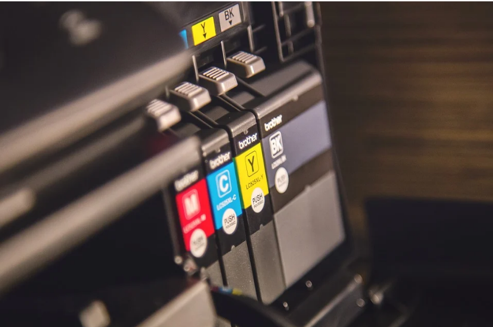Best Printing for Marketing & Advertising
What will result in the best printing for marketing & advertising? There’s no one type of printing method available throughout the printing industry. In fact, countless technologies and techniques exist in the printing world, allowing businesses to become more creative and efficient in their marketing practices. For effective marketing and advertising, businesses must have the support of some of the best printing techniques and materials there are. Unfortunately, most businesses are unaware of the effort and time it takes to become efficient in the printing industry. In this post, we will discuss some of the best printing techniques and technologies that help with both marketing and advertising to clients.

Best Printing for Marketing & Advertising
To get the most out of your marketing efforts and budget, you must seek the help of an experienced and professional company near you. Printing is an ancient practice but has evolved in purpose, use, and techniques greatly.
The Best Printing Techniques for Marketing and Advertising
As earlier, there are just not a handful of options. Rather, you will find various technologies and techniques active in the printing industry. Businesses have diverse printing needs and, on a massive scale, at that. That’s why printing companies remain vigilant and proactive in acquiring the best practices. Here’s a list of some of the best printing techniques used for marketing and advertising by businesses.
Offset Lithography
Offset lithography is one of the most sought-after printing techniques employed by printing companies in the industry. It’s usually best for rough-surface materials such as canvas, cloth, and wood. As versatile as offset lithography is, it can easily be used to print on books, stationery, and paper. Businesses looking for mass production to hand out brochures, pamphlets, or custom-printed stationeries go for this option. It’s suitable for mass production due to cost-effectiveness.
This technique involves the use of aluminum printing plates. Aluminum plates hold the image information, and professionals use these to transfer the image onto paper or the desired materials. The printing plates move towards the cylindrical rubber blankets (i.e., rollers) and then offset the image information and content on the desired materials. This process can assist in any type of paper material.
Using rubber cylinders, the process can easily offset image information and content onto rough surfaces such as canvas and rough cloth. Suitable for both big and small printing jobs, it ensures consistent quality. Nonetheless, you must check the printing company for reliability and whether or not they can complete high-volume projects.
Screen Printing
You must have seen or attempted to create business logo shirts for employees, loyal customers, or for other marketing purposes. The said job becomes easier with the help of screen printing. It’s used for printing graphics and logos on a variety of objects ranging from t-shirts and paper to stationeries. Fabric banners and posters also benefit from screen printing.
Screen printing involves using a fine mesh or similar type of material to transfer the required image or content onto the selected material. It’s a suitable printing technique for ink printing as it also allows quick drying. Once the fine mesh gets the image through ink, it stretches over the chosen material and then transfers the image. Pressing hard against the other object, this technique ensures efficient ink absorption.
If you ever see fabric banners and posters or graphic t-shirts, you must know that screen printing was used. If you’re looking to promote your business through logo-bearing stationeries, t-shirts, and other items, screen printing can help. Once the mesh has the image information, it stretches to form a screen that then allows printing over different types of material.

Screen printing isn’t a cost-effective option for small jobs. Since it isn’t as versatile, you’ll want to fill bulk orders to print the same design/pattern/logo/content on different materials.
Flexography Printing
Flexographic printing isn’t something new, but it’s a modern version of the letterpress printing technique. Using the latest technology and expert techniques, flexographic printing allows quick-drying and semi-liquid inks to be used for high-volume printing projects. The Flexographic printing technique is most suitable for printing over uneven surfaces or items such as labels, packaging, wallpapers, and gift wraps.
Usually, anything with a continuous pattern can be a prime candidate material to go through flexography. Flexography involves the use of rotating cylinders that bear printing plates comprising flexible photopolymer. The printing plates have the image information and content but at a slightly elevated angle. While the rotations occur at extremely high speeds, the print media gets the image information and content on it quite clearly and with consistent quality. But, it also depends on the health and efficiency of the printing machinery in use.
Best Printing for Marketing & Advertising: Conclusion
Advertising and marketing aren’t easy tasks. It requires a lot of effort to get the required exposure and construct a brand image in the eyes of potential customers. But, what’s better than a bright and premium-quality brochure that talks about your business’s latest product range and service development? Well, Automation Graphics has been addressing commercial printing needs in New York City for over 60 years.
You can turn to us for all your commercial printing needs, whether they’re based on your internal business working or advertising and marketing needs. Call one of the experts at Automation Graphics today at 646-205-3037.
